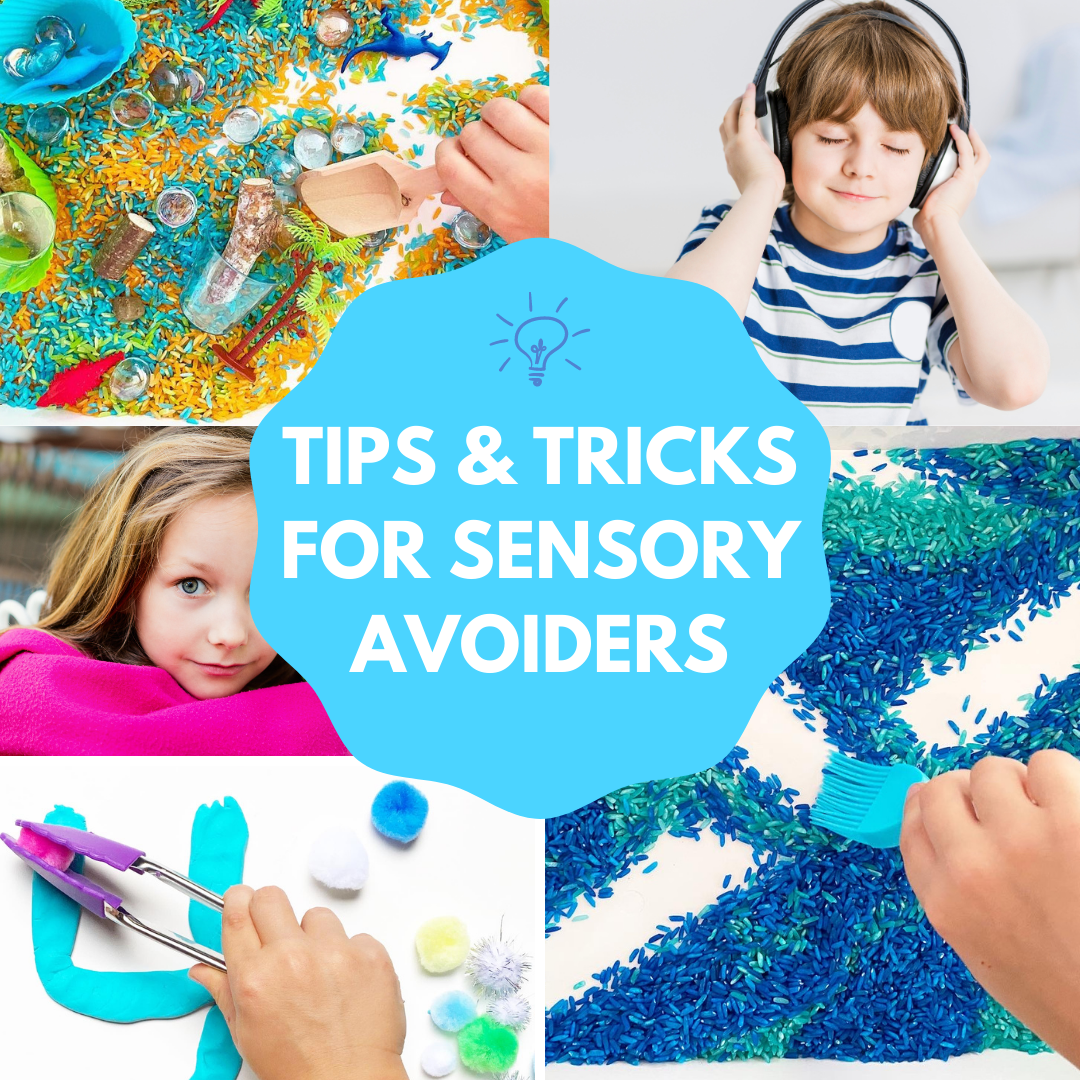
TIPS & TRICKS FOR SENSORY AVOIDERS
Share
Sensory Avoiders are oftentimes overly sensitive to situations and experiences and may exhibit sensory input more intensely than others. A hypersensitive child receives too much information through their senses. This causes the brain to become so overloaded with sensations that the person sees, hears, feels, smells and tastes in ways that are more extreme than others. For example, those with hypersensitivity may have extreme responses to loud noises, and/or be distracted by background noises that others are not. These children may avoid hugs or any other types of physical contact (even with familiar adults), or be extremely fearful of an activity that requires their feet to be off the ground. Sensory avoiders may turn away from sensory experiences that others seem to tolerate with ease. This could include experiences with a good deal of noise, or other experiences where there may be a high intensity of other sensory inputs involving smell, touch, or even visual stimulation.
If your child is easily overloaded, and shows signs of avoiding or becoming distressed by sensory stimulation, here are a few tricks you can try to help them re-group:
- Try using a weighted blanket to help facilitate calm.
- Play soft soft music with a slow rhythm.
- Provide an area with little sensation. For example, a cozy corner or other set apart area that contains soft pillows, low light, soft music, and soothing toys.
Looking for more tips and tricks? Our Busy Little Hands Program will foster your child’s self-regulation, sensory development and creativity through PLAY. We offer sensory kits for a healthy sensory lifestyle and success in learning and beyond.
Sensory Together is on a mission to provide kids with sensory play, but in a way that allows them to engage without becoming more hyperactive, anxious, and/or dysregulated. We provide you with expertly selected materials paired with play-based plans that show you how to engage your child without adding more stressors. The result? Progress in development, self-regulation and an increased sense of calm.
Our Sensory Fix Kit is more than just a box of sensory items.
- Choose a theme that will excite and motivate your child (Space, Dinosaurs, Mermaid, Unicorn).
- Follow the Desensitization Play Plan (this is an actual play guide that shows you HOW to use the materials to desensitize your child) sent to you via PDF download.
- Play for 20 minutes...or build up to 20 minutes (you know your child best).
What makes this kit different from other other kits?
The play plans in this kit focus on desensitization. All activities show gradual ways to progress with textures. This kit also features a special parent guide explaining expert strategies you can employ in addition to using the play plans.
References:
Balance, B. (2019). Signs and Symptoms of Sensory Processing Disorder. Retrieved from: https://blog.brainbalancecenters.com/2012/04/signs-and-symptoms-of-sensory-processing-disorder?_ga=2.24526265.2072470796.1596396385-1032157540.1596396385